History of iPhone 4: Changing everything — again

Steve Jobs returned to the WWDC keynote stage on June 7, 2010. He'd introduced the iPad earlier in the year, and kicked things off with an update on how it, and the App Store had been doing (spoiler: Well!). Then he turned his attention to iPhone, and after recapping everything Apple had done to date, he began on what they were doing next. It had over 100 new features. It had an all-new design, an all-new camera, and an all new screen resolution. It was hot. It was the iPhone 4
iPhone 4 is the biggest leap since the original iPhone. FaceTime video calling sets a new standard for mobile communication, and our new Retina display is the highest resolution display ever in a phone, with text looking like it does on a fine printed page. We have been dreaming about both of these breakthroughs for decades.
4 times the pixels, face times the cameras
The iPhone 4, codenamed N90/N92 and device number iPhone3,1, for the first time, offered significant improvements to the display. Apple went with optical lamination and an in-plane switching (ISP) panel with light-emitting diode (LED) backlight. It made images look as if they were painted just beneath the glass, and greatly improved viewing angles. Moreover, instead of matching competing display sizes of the time, it leap-frogged over them. To boost pixel count yet maintain compatibility with existing apps, Apple doubled resolution both horizontally and vertically, but kept the physical size constant at 3.5-inches. That took it from a resolution of 480x320 to 960x640, and from a density of 163ppi to 326ppi. It was dense enough, Apple argued, that at normal viewing distance the pixels disappeared. They called it a Retina display.
It was part of a completely new design, something akin to Braun and Leica. Those were aesthetics Apple's senior vice president of design, Jony Ive, held in the highest of esteem. It was flat, chemically-hardened glass (aluminosilicate) front and back, with a stainless steel band that ran around the sides, and it was 24% thinner than the iPhone 3GS. It would come in black and white, though the former far sooner than the latter.
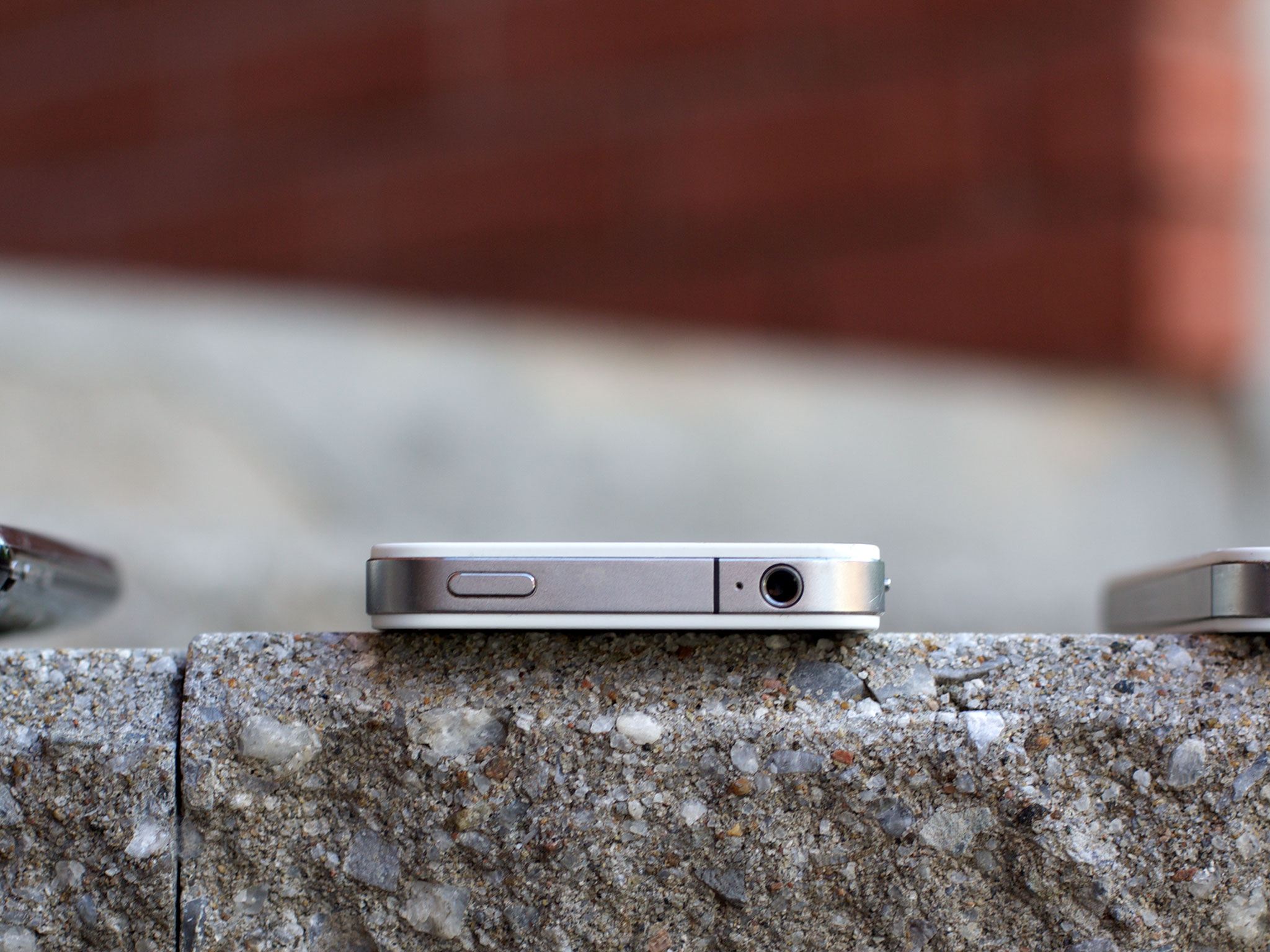
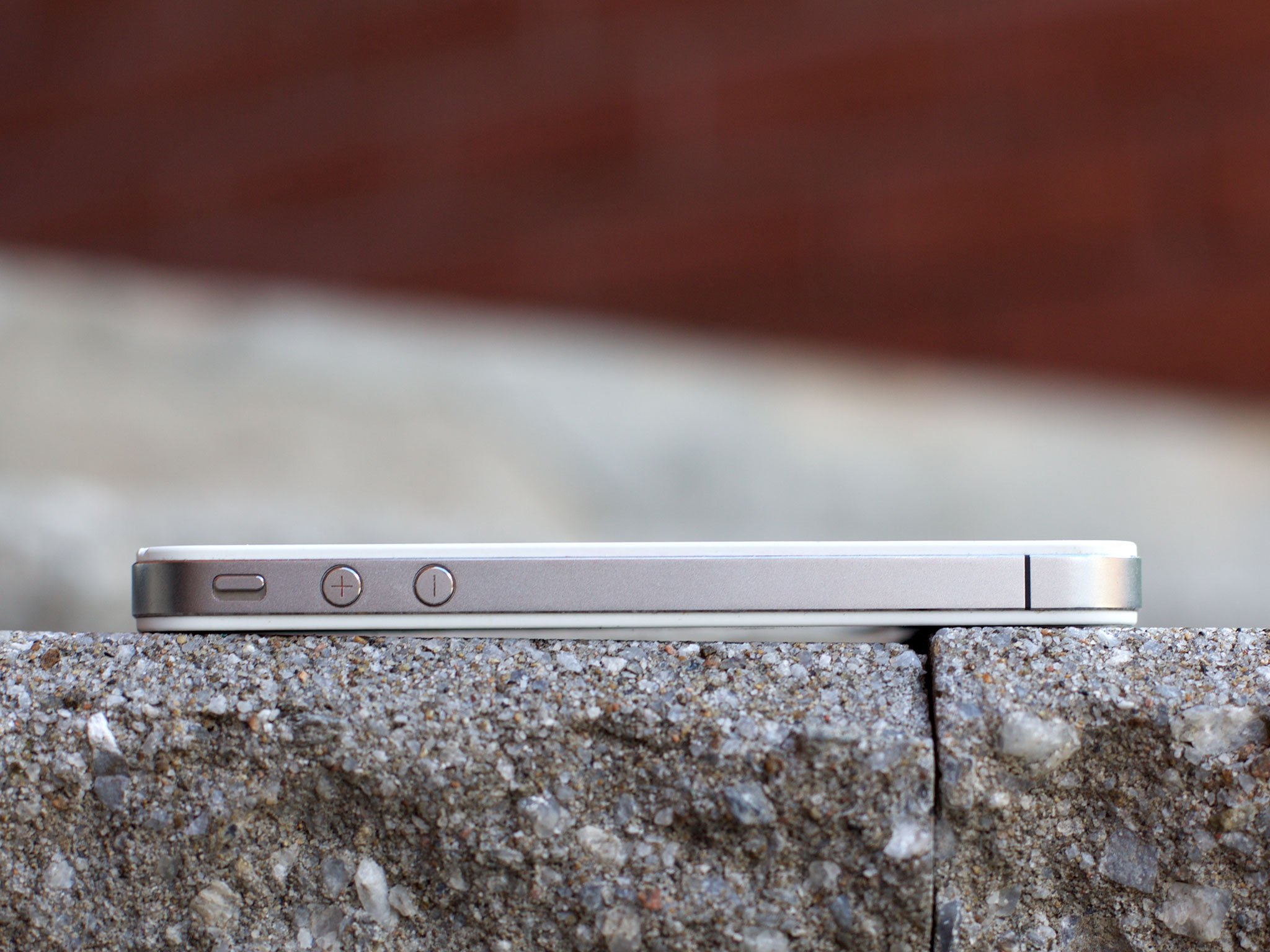
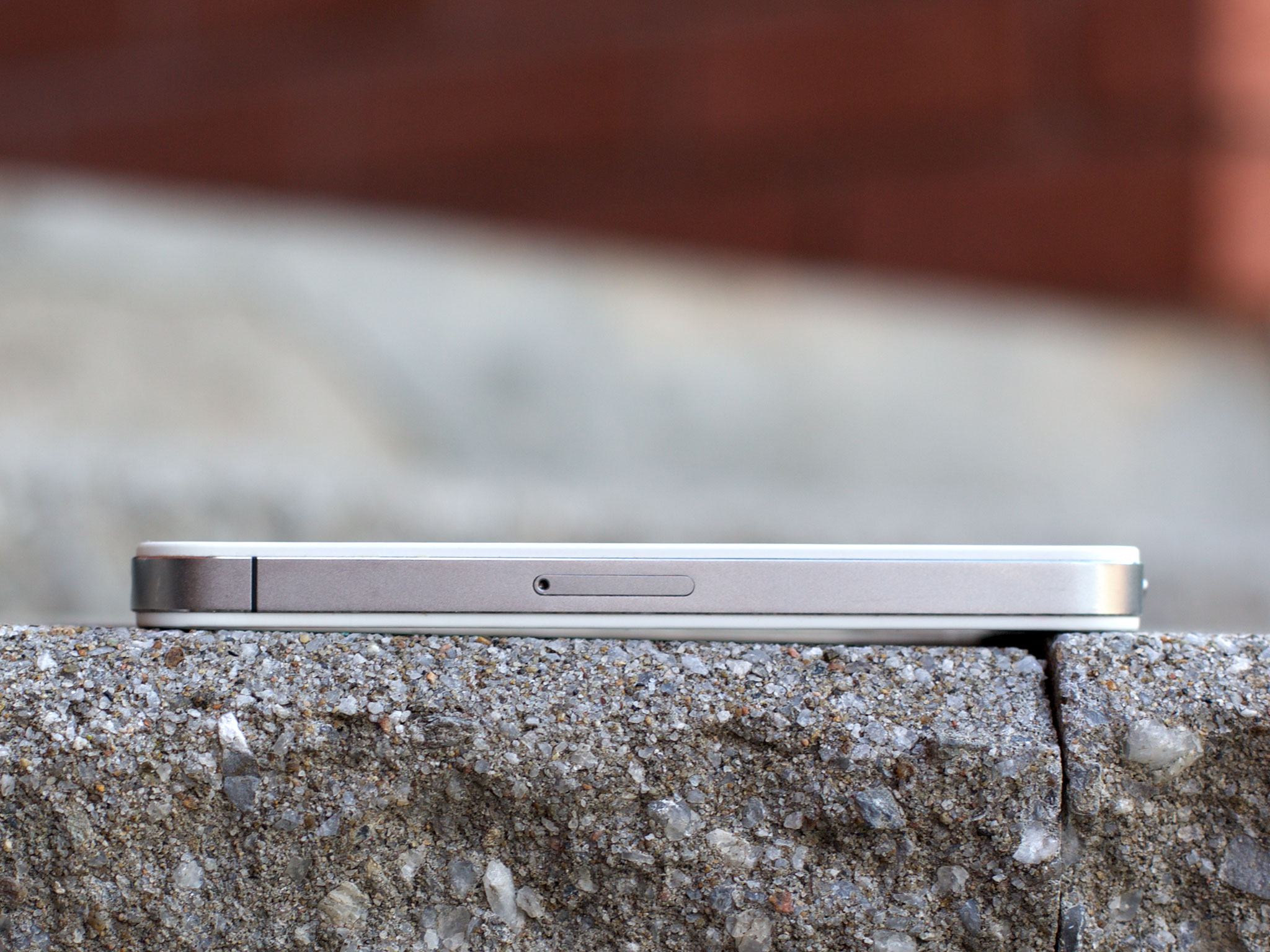
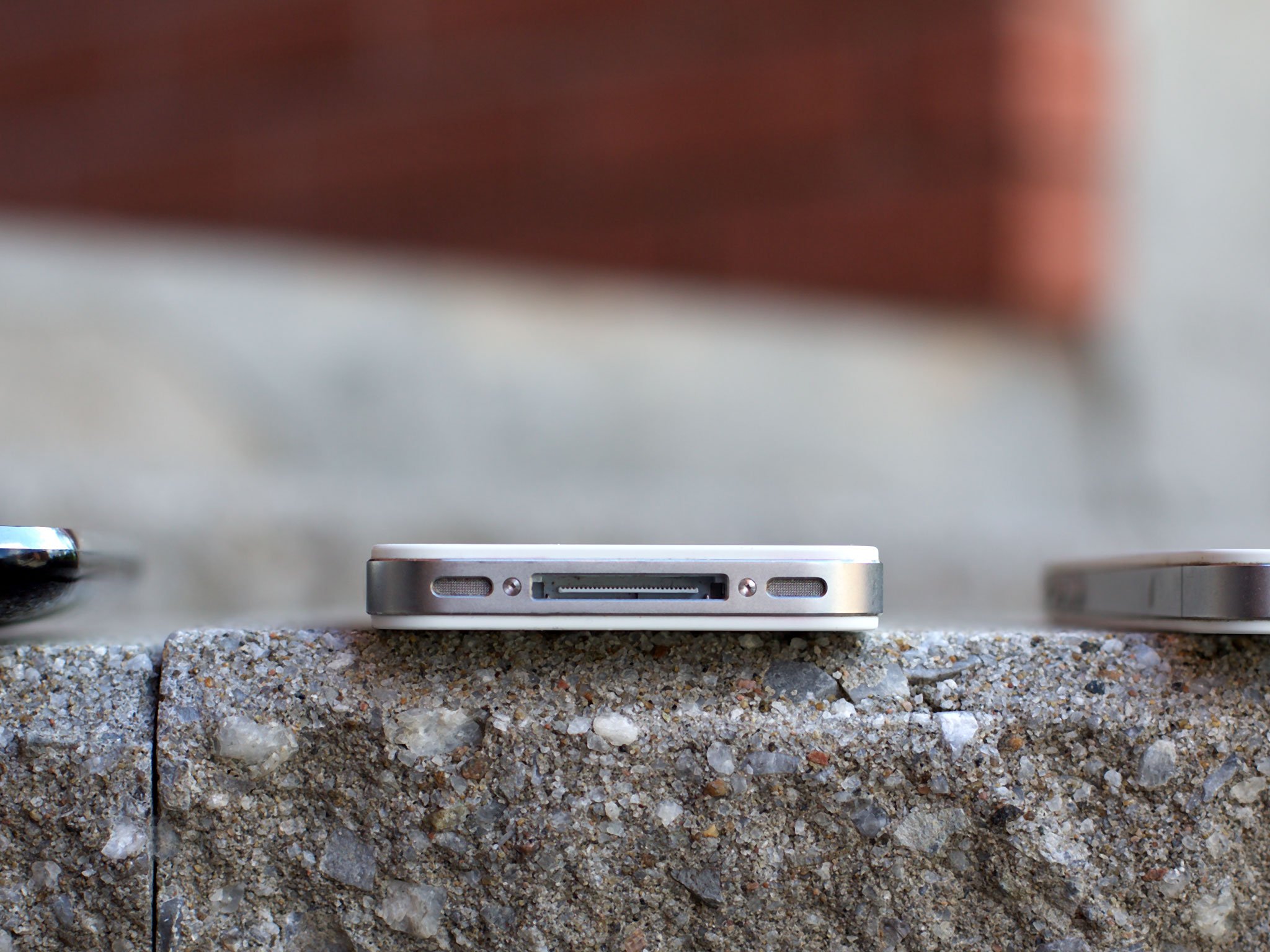
The cellular radio stayed pretty much the same, at least at first, though Apple did switch from mini to microSIM for the carrier card to save space. Bluetooth stayed the same as well. The Wi-Fi radio went to 802.11 g/b/n, though only on the 2.4Mhz band. The kicker wasn't the radios, however, it was this—the stainless steel band around the iPhone was the antenna. The top left contained Bluetooth, Wi-Fi, and aGPS, and the rest contained UMTS/HSPA. Steve Jobs said it had never been done before.
Again, we had a full model number increase, which meant a full processor increase. In the case it was the custom-designed system-on-a-chip—the Apple A4. It was still an ARM Cortex A8 processor, though clocked higher at 800Mhz, and the same PowerVR SGX535 graphics chip, but it would set the stage for some truly impressive silicon over the next few years.
Storage options stayed the same at 16GB and 32GB but RAM was increased to 512MB. Like every first generation Retina device, however, it was barely enough to support all those additional pixels. The battery jumped to 1420mAh, which meant that, even with Retina, Apple actually managed to increase useful battery life as well.
Dual mics were also added for noise cancelation and better noise quality. In addition to the previous accelerometer and compass, Apple added a 3-axis gyroscope to the iPhone 4, with pitch, roll, and yaw, as well as rotation around gravity. Working together they provided 6-axis motion detection. It was a huge leap forward when it came to precision control, especially for gaming.
iMore offers spot-on advice and guidance from our team of experts, with decades of Apple device experience to lean on. Learn more with iMore!
Apple took the iPhone 4's rear camera to 5 megapixels and 720p video, but at the same 1.75 micro pixel size, and added a backside illuminated sensor (BSI) and LED flash. There was, however, one more thing.
For the first time, Apple also added a front camera, VGA resolution. While it was a boon to the profile pics and "selfies" that were growing in popularity, it also allowed Apple to launch FaceTime video calling.
Price once again stayed the same, $199 and $299 on contract.
The best iPhone ever. Again.
The iPhone 4 launched on June 15, 2010. It would hit 88 countries and 185 carriers by the end of the year. Apple also launched iOS 4 along with it. Despite an initial rollout of only 5 countries, and considerable supply constraint, Apple still sold 1.7 million that first weekend.
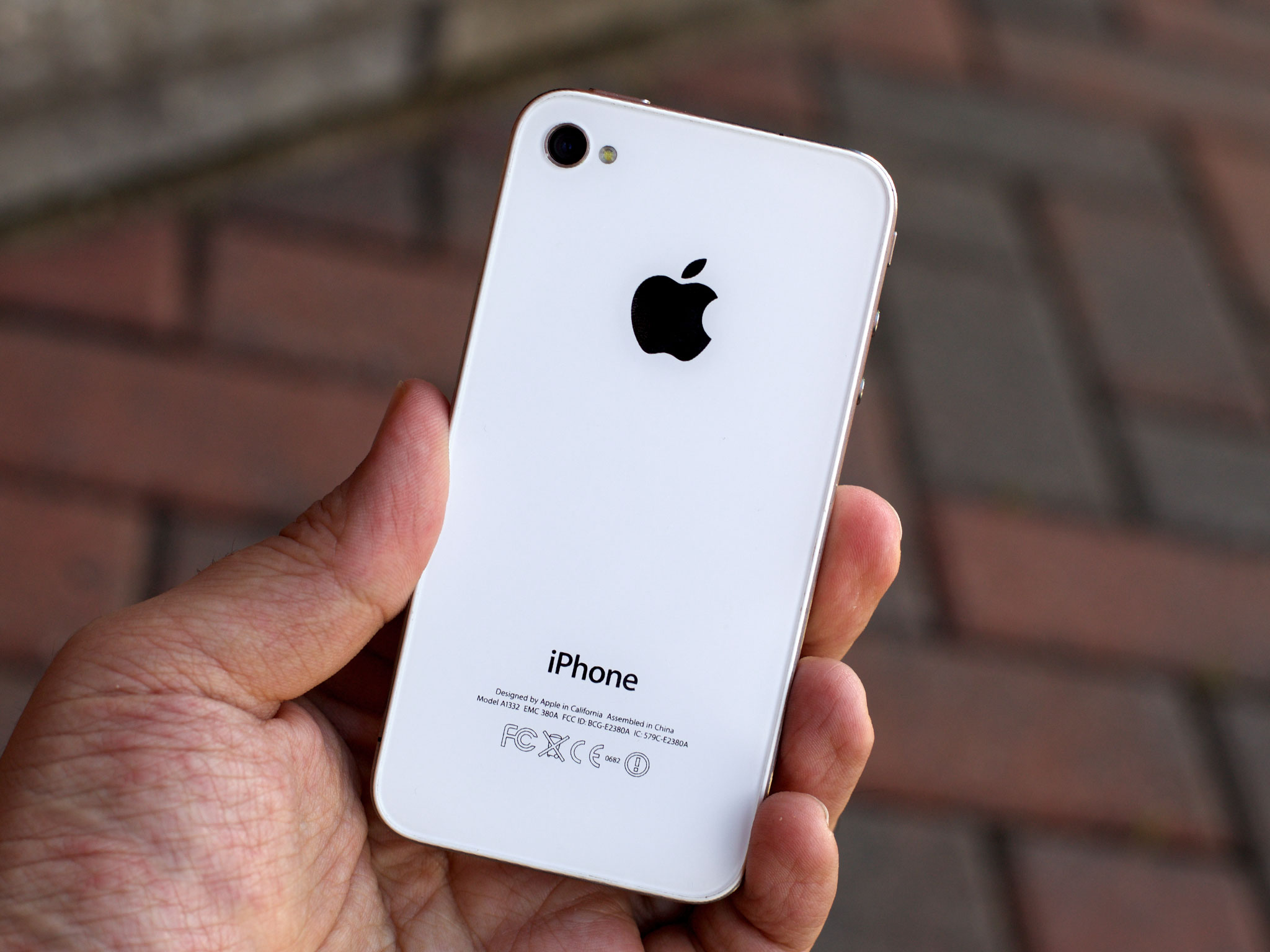
Steve Jobs said, via Apple:
This is the most successful product launch in Apple's history. Even so, we apologize to those customers who were turned away because we did not have enough supply.
AT&T let anyone within 6 months of their upgrade window qualify for full subsidy pricing, likely because they had an inkling what was coming, and even though the iPhone 4 provided far more hardware features than the iPhone 3GS, it was again aimed primarily at iPhone 3G owners and new customers, not the smaller niche of year-over-year upgrades.
Sascha Segan for PC Mag
The iPhone 4 is the best iPhone ever. That's for certain. It's the best media playing phone on the market, a terrific camera phone, and a truly awesome game-playing phone. It easily makes the cut for our list of The 10 Best Touch-Screen Phones. It's not the best phone-calling phone, but we've gone well beyond the era when everyone bought handheld, networked computers primarily for making long voice calls.
Joshua Topolsky for Engadget:
We're not going to beat around the bush -- in our approximation, the iPhone 4 is the best smartphone on the market right now. The combination of gorgeous new hardware, that amazing display, upgraded cameras, and major improvements to the operating system make this an extremely formidable package. Yes, there are still pain points that we want to see Apple fix, and yes, there are some amazing alternatives to the iPhone 4 out there. But when it comes to the total package -- fit and finish in both software and hardware, performance, app selection, and all of the little details that make a device like this what it is -- we think it's the cream of the current crop.
Yours truly for iMore:
An impressive new design, amazing new display, key features like multitasking, and an attempt to mainstream video calls, along with hundreds of other little improvements combine together to make this a substantial upgrade and clearly the best iPhone ever. (Given the success of previous iPhones, that's no faint praise).
With the iPhone 4, Apple for the first time began pushing the hardware well past the software.
Leaps... and stumbles
As innovative and exciting as the 2010 was for Apple, it was also painful. On April 19, 2010, it was revealed that an iPhone 4 prototype had been separated from an Apple engineer at a Redwood City bar. That prototype eventually made its way online, resulting in Apple's biggest product leak ever. While other sites got photos, the site that got the phone was Gizmodo.
You are looking at Apple's next iPhone. It was found lost in a bar in Redwood City, camouflaged to look like an iPhone 3GS. We got it. We disassembled it. It's the real thing, and here are all the details.
The fallout wouldn't just result in less of a surprise and cranky comments from Steve Jobs at WWDC and AllThingsD, it would result in a police investigation, and considerable repercussions for both Apple and Gizmodo.
The white version of the iPhone 4 also provided Apple with considerable challenges. Apple's engineering team had to prevent UV rays from yellowing it over time, and they had to prevent the opacity of the paint from interfering with the internal sensors. That took longer than they anticipated. Short term it meant the white iPhone 4 would not ship on time. On June 23, the following statement was released by Apple:
White models of Apple's new iPhone 4 have proven more challenging to manufacture than expected, and as a result they will not be available until the second half of July. The availability of the more popular iPhone 4 black models is not affected.
It would take until April 28, 2011 to hit the shelves. Phil Schiller, senior vice president of worldwide product marketing, via Apple:
The white iPhone 4 has finally arrived and it's beautiful. We appreciate everyone who has waited patiently while we've worked to get every detail right.
Apple's new, external antenna design, for all it's strong points when in good signal area turned out to have a weak point when the signal was low. If you put your finger on the juncture at the bottom left, you could detune it and lessen reception by a couple of bars. If all you had were a couple of bars or less, you could kill reception completely.
It was absolutely a real, reproducible issue, and real people were absolutely affected, but since removing the finger or insulating the juncture with a case, returned the iPhone to normal working order, it wasn't a showstopper. That didn't matter, though. There was blood in the water.
Apple at first tried to show that any mobile phone, if enough surface area was covered, could suffer from signal strength attenuation. That was true but also beside the point. Any phone could be attenuated but far fewer could be detuned and the iPhone 4 was by far the most popular and high profile.
On July 2, an open letter was published by Apple:
Upon investigation, we were stunned to find that the formula we use to calculate how many bars of signal strength to display is totally wrong. Our formula, in many instances, mistakenly displays 2 more bars than it should for a given signal strength. For example, we sometimes display 4 bars when we should be displaying as few as 2 bars. Users observing a drop of several bars when they grip their iPhone in a certain way are most likely in an area with very weak signal strength, but they don't know it because we are erroneously displaying 4 or 5 bars. Their big drop in bars is because their high bars were never real in the first place.To fix this, we are adopting AT&T's recently recommended formula for calculating how many bars to display for a given signal strength. The real signal strength remains the same, but the iPhone's bars will report it far more accurately, providing users a much better indication of the reception they will get in a given area. We are also making bars 1, 2 and 3 a bit taller so they will be easier to see.
It wasn't enough. On July 16, Apple held a press conference to address the ongoing issue and offered free bumpers to anyone suffering from the problem. Apple also granted an unprecedented look inside their multimillion dollar antenna design and testing center. They'd later redesign the antenna and reduce, and then eliminate the problem.
We wouldn't have to wait a full year for a completely new iPhone generation to get the redesigned antenna, however. We only had to wait some six months, at least for the announcement.
On January 10, 2011 Apple's then-COO Tim Cook took the stage at another, separate event and announced the iPhone would, at long last, come to Verizon.
It launched on February 10, and included a new antenna array that not only minimized detuning but supported CDMA and EVDO Rev A networking as well. EVDO Rev A was nowhere nearly as fast as GSM HSPA, nor could it handle simultaneous voice and data, but thanks to Verizon's network, it greatly increased the reach and customer experience in the U.S.
Combined with the white iPhone 4 shipping, it let Apple leave that year on a considerable high.
How to make a competing phone
Apple's competitors had learned a lot over the last few years. Some directly from having worked with Apple to manufacture phones and their components, like Samsung, and others who'd worked with Apple on software and services, like Google. Others had learned relatively little, like BlackBerry.
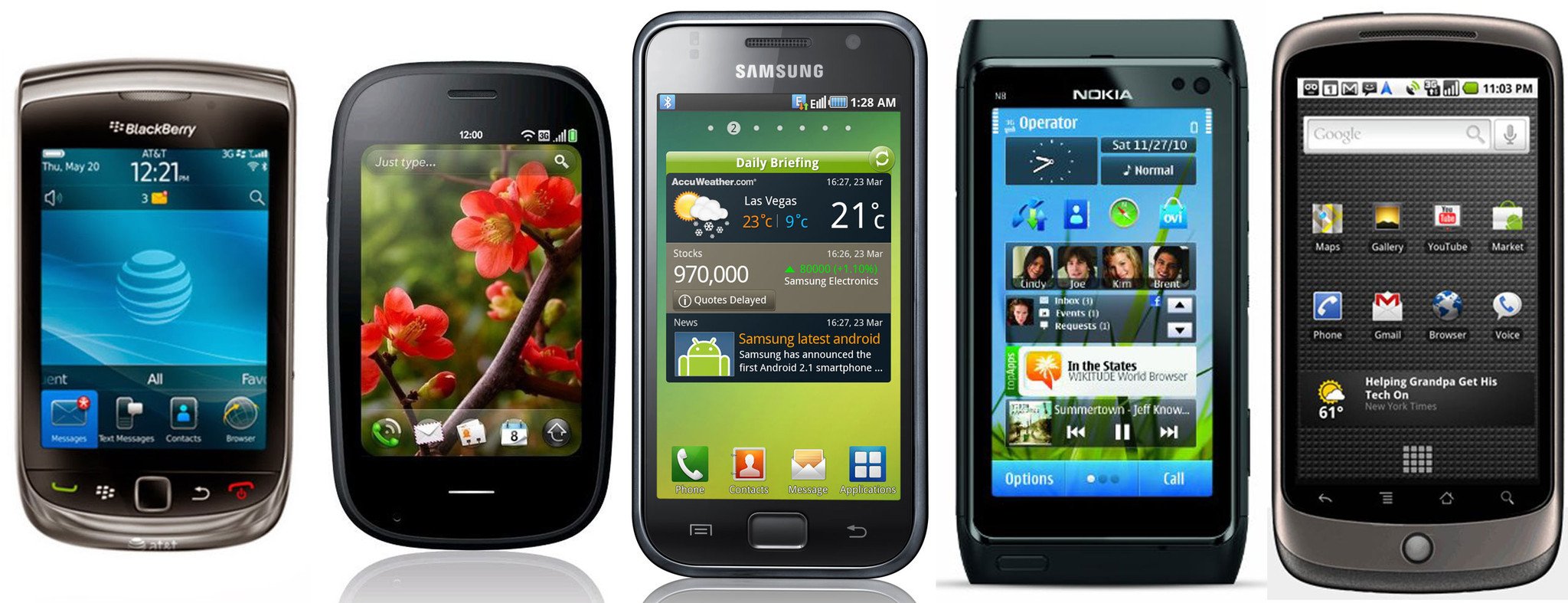
After letting Verizon dictate criteria for the failed BlackBerry Storm, RIM let AT&T dictate criteria for the BlackBerry Torch. It tried to both compete with full screen phones but also keep traditional keyboard customers happy. It's tough to argue the Torch ended up doing either well.
Samsung began the year well. They'd achieved a large level of success with their Galaxy S lineup by being the closet thing you could get to an iPhone on Verizon back before you could get an iPhone on Verizon. The iPhone 4 killed that strategy, however, so it was unclear where they'd go next.
Palm, for all their software elegance, wasn't able to get the carrier deals it needed. Because, unlike Microsoft, Google, Samsung, and Apple, it had no other businesses to help fund its phone aspirations, it also had trouble getting cutting edge hardware components to match its cutting edge experience.
Google, meanwhile, had Nexus One. It was launched in collaboration with HTC and timed it not only to hit Apple after its yearly hype cycle had ended, but hit the tech press just as CES excitement had begun. It was also unlike any other Android phone ever seen before—a look forward at what the next year would bring.
Competitive trash-talk had shifted, in part, from iPhone to iPad, but rival CEO's weren't entirely silent in 2010:
Jim Balsillie, of RIM (BlackBerry):
As usual, whether the subject is antennas, Flash or shipments, there is more to the story and sooner or later, even people inside [Apple's] distortion field will begin to resent being told half a story.
Eric Schmidt, former Apple board member but not yet former Google CEO, began his campaign to paint Apple as closed and Google as open:
The easiest comparison to do today is the Apple model. You have to use their development tools, their hardware, their software, when you submit an application they have to approve it. That would not be open. So the inverse would be open.
Every company is closed when it comes to what makes them successful and open when it comes to what makes their competitors successful. Apple was open with browsers just like Google was closed when it came to search algorithms and ad exchanges. Since it was easier to see and feel end-point openness, however, Google succeeded in rallying many in the open source software community to their cause.
Google's Vic Gundotra beat the same drum at the company's annual I/O conference:
If Google did not act, we faced a draconian future where one man, one company, one device, one carrier would be our only choice. That's not a future we want.
That similar hyperbole could be aimed at Google when it came to search didn't matter. By making it free to vendors and handing back ultimate control of the phone experience to carriers, Android's ascension had begun.
Four Years Later
The iPhone 3G was gone, the iPhone 3GS remained, and the iPhone 4 once again took Apple to greater numbers than ever before. Nothing, however, could prepare the world for what would happen next...

Rene Ritchie is one of the most respected Apple analysts in the business, reaching a combined audience of over 40 million readers a month. His YouTube channel, Vector, has over 90 thousand subscribers and 14 million views and his podcasts, including Debug, have been downloaded over 20 million times. He also regularly co-hosts MacBreak Weekly for the TWiT network and co-hosted CES Live! and Talk Mobile. Based in Montreal, Rene is a former director of product marketing, web developer, and graphic designer. He's authored several books and appeared on numerous television and radio segments to discuss Apple and the technology industry. When not working, he likes to cook, grapple, and spend time with his friends and family.
